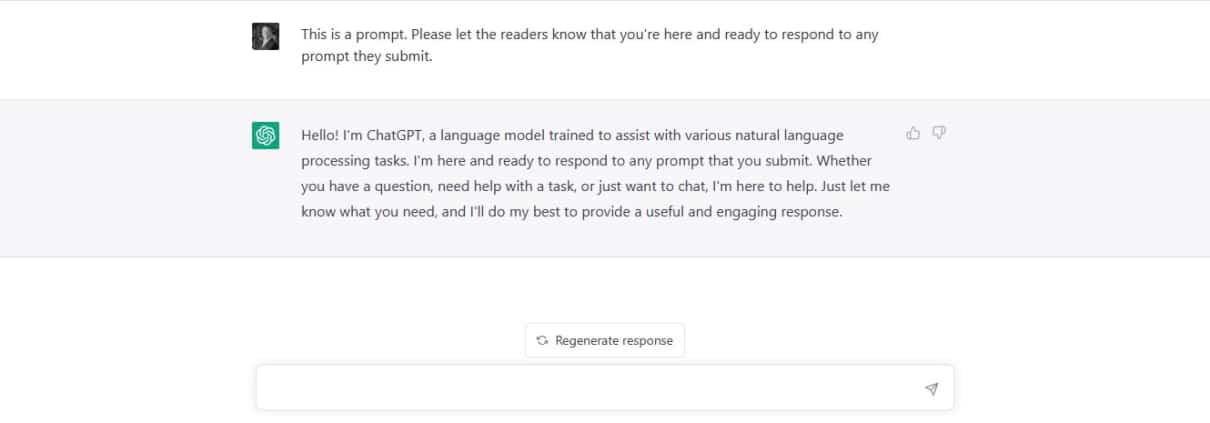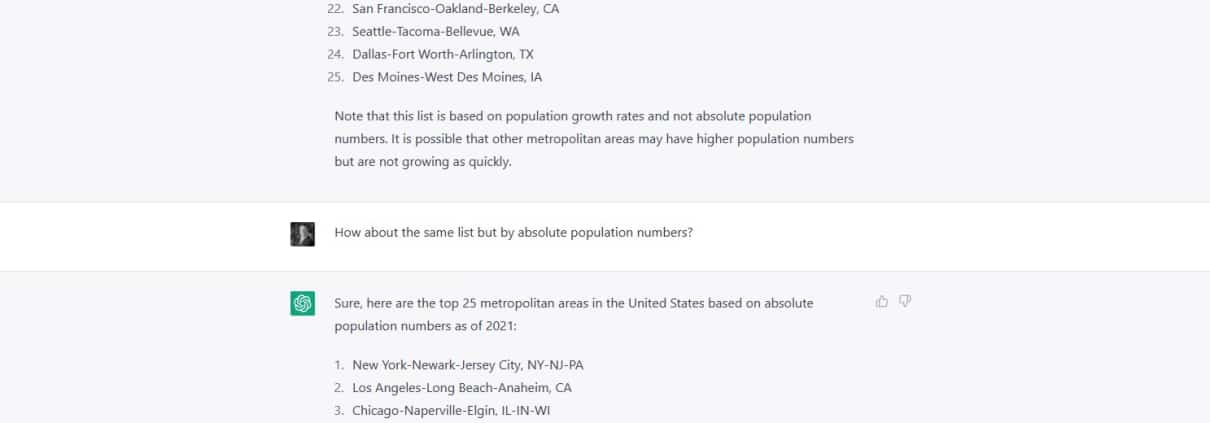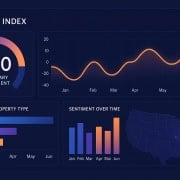Guide to Using ChatGPT for Commercial Real Estate Professionals
As someone who has worked in the commercial real estate industry going on 22 years, I’ve come to appreciate how important it is to stay on top of the latest trends and technologies. As I’ve shared my own personal experience using ChatGPT in commercial real estate, I’ve received several emails asking how to get started using the tool. So, I thought I’d create a guide to using ChatGPT for CRE professionals.
ChatGPT (and its underlying natural language model GPT) is trained to understand natural language and thus can perform a variety of standard tasks to help us focus more on how we best add value: managing relationships and making investment/strategy decisions. In this guide, I’ll walk you through how to use ChatGPT to improve your workflow, save time, and ultimately be more successful in your day-to-day. So, let’s dive in and explore how this cutting-edge technology can benefit your career in commercial real estate!
Important Note: This technology is nascent. As such, the content of this post will need updating from time-to-time. I’ll do my best to update this post as the tech evolves. Similarly, as is the case with any tech in its infancy, ChatGPT (and GPT) has significant room for improvement.

A response from the prompt: “ChatGPT – Write a short paragraph introducing yourself.”
About this Guide and Why Use AI in Commercial Real Estate
This guide is meant to guide you through the steps of accessing and using OpenAI’s ChatGPT and/or its other natural language model tools. It is also meant to provide a (growing) list of ways to use these tools to make us better.
Also in this guide, I will share various tutorials I’ve created over the past few months on how I am using natural language models. As the tutorial series grows, I will add additional posts which you will be able to find at: https://www.adventuresincre.com/artificial-intelligence/. If you have any suggestions, questions, or comments about this series or guide please let us know.
In terms of why use AI tools like ChatGPT in commercial real estate.
In my personal view, many of the daily tasks that commercial real estate professionals undertake – especially analysts and associates – are redundant and lower value. From manually transposing numbers from an operating statement and pasting them into an Excel file to writing the same template email over and over again, these repetitive tasks keep us from focusing on true value add activities.
In the same way that computers didn’t replace humans, these types of tools will not replace commercial real estate professionals. Instead they will free up our time so that more of our day-to-day is spent on higher-level thinking.
This guide is meant to provide you the know-how to begin experimenting with ChatGPT and hopefully find ways to improve your own daily process using the tool.
What is ChatGPT vs GPT?
GPT (Generative Pre-trained Transformer) is a powerful language model developed by OpenAI. It has been trained on a massive dataset of diverse text sources, including books, articles, and websites. GPT can perform a wide range of natural language processing tasks, including language translation, text completion, question answering, and even generating human-like text.
ChatGPT, on the other hand, is a specialized version of GPT that has been fine-tuned specifically for conversational applications. It has been trained on a dataset of conversational data, such as chat logs, and is optimized to generate more coherent and contextually relevant responses to user input. ChatGPT is designed to be used in chatbots and other conversational AI applications, where it can provide more natural and engaging interactions with users.
In summary, GPT is a general-purpose language model that can perform a wide range of NLP tasks, while ChatGPT is a specialized version of GPT that has been optimized for conversational applications.
I. Sign Up for OpenAI to Access ChatGPT and/or the GPT Language Model
The first step to getting started is to create an account with OpenAI, the company that built ChatGPT (as well as other AI tools such as DALL·E, the AI image generator). To sign up for OpenAI and access ChatGPT, follow these steps:
- Visit the OpenAI’s ChatGPT website at https://chat.openai.com/ and click on the “Sign Up” button.
- Fill in your email address (or choose to sign up using a Google or Microsoft account) and create a password. Then follow the steps to finish registration. Note that an OpenAI account is free (as of Feb 2023) but there are premium paid plans that add functionality.
- Once you’ve created an account, you can access the OpenAI documentation and view the various AI tools available to you at https://platform.openai.com/
- Currently the AI tools available include code completion (i.e. write code with no coding experience), fine-tuning (i.e. train a model for your use case), text completion, image generation, and embeddings (i.e. search, classify, and compare text).
- Likewise, you can go to https://chat.openai.com/ to view ChatGPT.
Please note that OpenAI may have a different sign-up process then what is shared above. Again, as with any new tech things are evolving/advancing quickly and therefore OpenAI may change their process. If the above is out-dated, please let us know and we’ll update accordingly.

Create an OpenAI account.
II. Create Your First Prompt
In the context of GPT (or ChatGPT), a prompt is a starting point or a set of instructions that you provide to the model to generate text. When you create a prompt, you are essentially giving the model a specific task to perform, such as writing a news article, generating a poem, writing code, or answering a question.
A prompt typically consists of a few sentences or a paragraph of text that provide context and guidance to the model. The prompt can be as simple or complex as you need it to be, depending on the task you want the AI to perform. For example, if you want GPT to write an email, you might provide a prompt that includes the subject, recipient(s), purpose, and any other elements.
- To create a prompt for ChatGPT go to https://chat.openai.com/.
- To create a prompt for GPT, go to https://platform.openai.com/playground.
When you submit your prompt to GPT, the model processes the input and generates a response based on its training data and the context provided in the prompt. The quality and relevance of the generated text will depend on the quality of the prompt and the model’s training data.
The quality, specificity, and relevance of the prompt is the key to a quality output. The AI is only as good as the prompt you enter. In fact, there is a new job function that has come from this technology: Prompt Engineer. A Real Estate Prompt Engineer would have the technical know-how, organizational skills, and writing acumen to create prompts that the AI models can use to create valuable outputs.

This is a ChatGPT prompt.
III. Revise and Iterate on the Prompt to Produce a Useful Output
While a prompt results in an output, that output may (or may not) be sufficient. Thus, modifying a GPT prompt becomes an essential technique for improving the quality and relevance of the generated text. Here are some tips for modifying a GPT prompt to make it better:
- Provide clear and specific instructions: A good prompt should provide clear and specific instructions for the task you want GPT to perform. Be as specific as possible and provide context and guidance to help the model generate relevant and high-quality text.
- Use a consistent style and tone: Consistency in style and tone can help GPT better understand the context and generate text that matches the tone and style of the prompt. Consider the audience and purpose of the text you want to generate and ensure that the prompt is written in a style and tone that is appropriate.
- Include relevant keywords: Including relevant keywords in the prompt can help GPT generate more relevant text. Consider the key concepts and ideas that you want the generated text to cover and include those keywords in the prompt.
- Incorporate additional context: Providing additional context in the prompt can help GPT better understand the task and generate more relevant text. Consider providing examples, background information, or additional instructions to help guide the model.
- Further test and refine the prompt: Testing and refining the prompt can help you identify areas for improvement and generate better quality text. Experiment with different prompts and compare the results to find the one that works best for your task.
Overall, modifying a GPT prompt requires careful consideration of the task, audience, and context. By providing clear instructions, using a consistent style and tone, including relevant keywords and additional context, and testing and refining the prompt, you can improve the quality and relevance of the generated text.

The result is only as good as the prompt. Revise the prompt to get the right output.
IV. Ways CRE Professionals Might Use ChatGPT and/or GPT
So, what are a few of the use cases for ChatGPT in commercial real estate? Here is a list that I’ve come up with together with links to several video tutorials where I show you how I’m using the tool for those particular uses.
- Create VBA code (i.e. Excel Macros) for real estate Excel models. ChatGPT (and GPT in general) has the ability to write VBA code, the language used by Excel to build Macros.
- Draft a letter of intent, memorandum of understanding, or other document with non-binding business terms. ChatGPT can help you modify clauses, write new clauses, and ultimately create non-binding legal documents.
- Find real estate data for research purposes. ChatGPT can help sources real estate data such as population growth by metro, job growth by county, lists of cities and counties by state, etc.
- Draft standard emails. ChatGPT can be used to speed the creation of standard emails sent out regularly. For instance, CRE professionals send out the same general email each time they submit an offer. ChatGPT can speed that drafting process.
- Summarize documents such as leases. ChatGPT can be used to summarize documents by training it on a dataset of document summaries and using it to generate summaries for new documents.
- Draft social media posts and other ad content. Social media is an important tool for many commercial real estate professionals, especially customer-facing roles such as investment sales and leasing brokers. GPT can provide new ideas and refine existing ideas for social media and ad content.
- Lead generation. ChatGPT can be used to generate leads for brokers. The chatbot can engage potential customers in conversation and collect their contact information, allowing agents to follow up and provide more information about available properties.
- Customer management. ChatGPT can be used to manage customer inquiries and requests (e.g. inquiries from tenants, buyers, etc). The chatbot can provide tenants with information about building amenities, maintenance requests, and other important information.
Summary – Using ChatGPT in Commercial Real Estate
ChatGPT, and its underlying natural language engine GPT, is a powerful tool that can help commercial real estate professionals do more with less. Those that learn to harness these types of tools will thrive (and surive).
At the same time, artificial intelligence is not the end-all-be-all. It will not replace us, but rather elevate us to work on high and more valuable work. It will instead free us to focus on strategic thinking and relationship management; to think more critically about the investment decisions we are tasked to make.
I hope this guide was useful as you begin to integrate artificial intelligence into your day-to-day.
Frequently Asked Questions about Using ChatGPT for Commercial Real Estate Professionals
What is the difference between GPT and ChatGPT?
GPT is a general-purpose language model that can perform a wide range of NLP tasks. ChatGPT is a specialized version of GPT fine-tuned for conversational applications, optimized for coherent and contextually relevant responses in chat settings.
How can I access and use ChatGPT?
Visit https://chat.openai.com/ and sign up using your email, Google, or Microsoft account. Once registered, you can start using ChatGPT to perform a wide range of tasks by entering prompts directly in the chat interface.
What is a prompt and why is it important?
A prompt is a set of instructions or context you give to the AI to generate a response. “The quality, specificity, and relevance of the prompt is the key to a quality output.” A well-crafted prompt leads to more accurate and helpful responses.
How can I improve the quality of AI-generated outputs?
You can improve outputs by:
Providing clear, specific instructions
Using a consistent tone
Including relevant keywords
Adding background context
Testing and refining the prompt based on results
What are some ways CRE professionals can use ChatGPT?
Use cases include:
Writing Excel VBA macros
Drafting LOIs and MOUs
Researching market data
Creating standard emails
Summarizing leases and documents
Generating social media content
Supporting lead generation and tenant communications
Does using ChatGPT mean my job is at risk?
No. “These types of tools will not replace commercial real estate professionals. Instead they will free up our time so that more of our day-to-day is spent on higher-level thinking.” It’s about elevation, not replacement.
What skills are helpful for using ChatGPT effectively in CRE?
Skills include:
Understanding how to write effective prompts
Familiarity with CRE terminology and workflows
Critical thinking to evaluate AI responses
Basic Excel and VBA knowledge (for automation use cases)
Where can I find more tutorials on using ChatGPT for CRE?
You can find Spencer’s tutorials and additional resources at https://www.adventuresincre.com/artificial-intelligence/.







